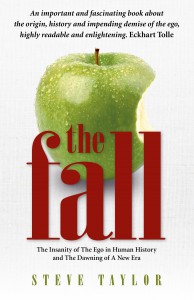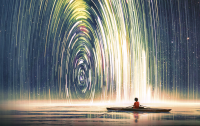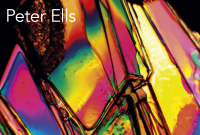
Since Europeans first arrived on the shores of the ‘New World,’ one of the greatest sources of culture clash between European colonists and indigenous tribal peoples has been their different attitudes to nature.
Indigenous peoples throughout the world have been consistently appalled by European peoples’ lack of respect for the natural world, and systematic abuse of nature. They generally feel a strong sense of empathy and kinship with nature, and perceive natural things as alive. But in contrast, Europeans have generally seen nature as little more than a supply of resources to be exploited. We – at least most of us – treat natural things as objects with no inner life or being. We have no sense of empathy with them – how we could have, since as far as we’re concerned they have no being to empathise with? And since they are just things with no interior, there’s no reason why they should have any value for us, except as resources.
One of the European concepts which indigenous peoples like the Native Americans and Australian Aborigines found most difficult to understand was that of the ownership of land and natural resources. Ownership implies a position of superiority and dominance. Since we European peoples know that we are conscious and alive ourselves, and perceive natural phenomena as not being alive and conscious, we feel that we’re superior to nature, as a master is to a slave, and so feel entitled to dominate it. But indigenous peoples’ sense of the sacredness and alive-ness of nature means that they could never take this attitude. Even as communities, they rarely see themselves as owning land or natural resources in the sense that we understand the term. As the anthropologist Colin Scott notes, to the Cree Indians, ‘no one, not even the Creator, owns land.’[1] At the most, they might see themselves as looking after it on behalf of the Great Spirit. This attitude often worked in European colonists’ favour, since many Native American groups saw the idea of selling areas of land as an absurd joke, and let the Europeans buy them for almost nothing.
This respect for nature appears to have an underlying spiritual source. Natural phenomena are alive because they are pervaded with Spirit. Trees, rocks and mountains are animate because of the spirit-force – the Life Master or Great Spirit – which flows through them. Almost all – if not actually all – indigenous peoples have a concept of this ‘spirit-force.’ I have been collecting examples of these terms from my readings of anthropological and religious texts for years, and have lost count of the number I have. To give just a few examples, in America, the Pawnee called it tirawa, while the Lakota called it wakan-tanka (literally, the ‘force which moves all things’). The Ainu of Japan called it ramut (translated by the anthropologist Monro as ‘spirit-energy’[2]), while in parts of New Guinea it was called imunu (translated by early anthropologist J.H. Holmes as ‘universal soul’[3]). In Africa the Nuer call it kwoth and the Mbuti call it pepo. Indigenous peoples (at least those whose cultures have not severely disrupted by now) therefore generally respect nature because they see it as the manifestation of Spirit. To damage or destroy natural phenomena would be a crime against Spirit itself, and disturb the harmony of the world. And since they sense that they are manifestations of Spirit too, these peoples feel a sense of kinship with nature, a sense of sharing identity with it, which contrasts with the sense of ‘otherness’ to the natural world which we normally experience. The Australian Aborigines perceive that all things have their own ‘dreaming’ – that is, their own inner life, or subjectivity. They can’t conceive of themselves as being separate from nature since to them, in the words of another anthropologist, Lynne Hume, ‘Everything is interconnected in a vast web of sacredness.’[4]
Most modern Eurasian peoples clearly do not have this awareness of Spirit in the world. Rather than being a commonly perceived everyday reality, for us the concept of an all-pervading Spirit only appears in mystical and esoteric traditions, such as the brahman of Hindu mysticism, or the Dao of Chinese Daoism.[5] We have apparently become blind to Spirit in the world – and this is, presumably, why we do not sense natural things as being alive.
But there is evidence that this wasn’t true of earlier of inhabitants of Europe and Asia. It appears that the earliest Europeans had the same kind of reverential and empathic attitude to nature as the Indigenous Americans and Australian Aborigines. This is suggested by the artwork of ‘Old Europe’, for example, the culture which was unearthed and reconstructed by the archaeologist Marija Gimbutas. Old Europe flourished between 7000 BCE and 2500 BCE, covering large parts of southern, central and eastern Europe. And alongside its apparent peacefulness and egalitarianism, one of the most striking things about Old European culture is its artwork, which is full of beautiful natural images. These were practically everywhere in their villages and towns – images of the sun, of water, serpents and butterflies, painted or drawn on the outside and inside walls of houses, in shrines, on vases and bas reliefs. There are also numerous drawings of ‘cosmic eggs,’ and representations of goddess figures as part human and part animal, suggesting that there was a sense of the interconnectedness of nature. Old European culture survived longest in Crete, whose isolation protected it from Indo-European invaders until around 1500 BCE. And the artwork of the ancient Cretans – or Minoans – shows the same sense of wonder. According to the archaeologist Nicolas Platon, for instance, the art work of the ancient Cretans showed a ‘delight in beauty, grace and movement’, and an ‘enjoyment of life and closeness to nature.’[6] It’s obviously impossible to say for sure that this indicates that these people had the same ‘spiritualised’ vision of the world as many indigenous peoples, but, as Riane Eisler points out, the archaeological evidence suggests ‘a view of the world in which everything is spiritual (inhabited by spirits) and the whole world is imbued with the sacred: plants, animals, the sun, the moon, our own human bodies.’[7]
 The Fall,
by Steve Taylor
The Fall,
by Steve Taylor
Human achievement versus war, patriarchy and social inequality.
If alien beings have been observing the course of human history over the last few thousand years they might well have reached the conclusion that human beings are the product of a scientific experiment which went horriby wrong. Steve Taylor writes about the balance between the bright side of human achievement and the other devastating, dark side, that is war, patriarchy and social inequality.
BUY ONLINE
Categories:
0 comments on this article







